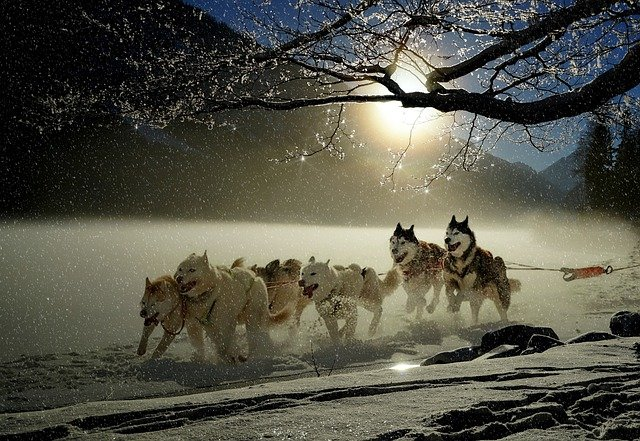
Are you thinking about getting a sled dog as a family companion? There are numerous sled dog breeds, and you may be wondering which one is best for you.
Sled dogs are best suited to physically active owners who are strict in enforcing rules. These dog breeds were developed specifically for hauling heavy loads while remaining fast and resilient in harsh arctic conditions. Sled dogs were also raised in packs, requiring a pet owner who exudes the authority they are willing to follow.
Continue reading to learn more about sled dogs!
Table of Contents
What are Sled Dogs?
Sled dogs refer to dog breeds originating in Mongolia around 35,000 to 30,000 years ago. Humans began using them as sled dogs 3,000 years ago. They trained the dogs in pulling sleds since they migrated from one place to another. Humans selectively bred the sled dog to survive in harsh arctic conditions.
They became the most commonly used dogs during the late 1800s to early 1900s. Afterward, technology replaced the sled dog in their duties. These were innovations such as trucks, airplanes, roads, and snowmobiles. Some people in Arctic Canada, Alaska, and Greenland still use sled dogs in rural areas.
Fun Fact About a Heroic Sled Dog!

A famous sled dog is named Balto, a Siberian husky. Balto became well-known for being the lead dog of the sled dog team that recovered a serum from Nenana to Nome within six days. The antidote was for the bacterial infection diphtheria, which caused an epidemic in 1925.
Let’s dive into the different sled dog breeds in the following sections.
Sled Dogs Recognized by Kennel Clubs
We’ll start with the most famous sled dogs recognized by major kennel clubs, such as the American Kennel Club (AKC).
Siberian Husky
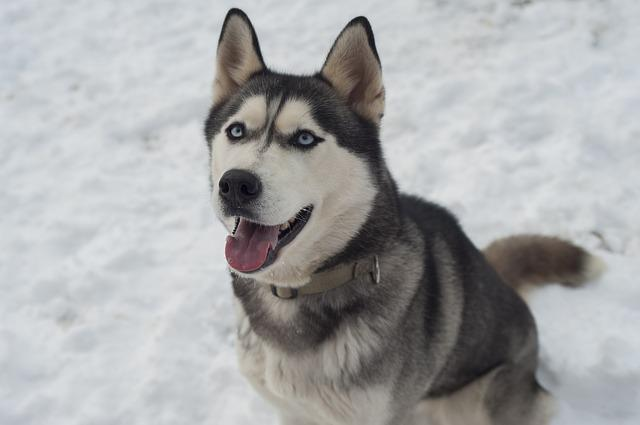
No one can deny the popularity of Siberian huskies. The Siberian husky is a dog breed recognized by the AKC since 1930. In the AKC’s popularity poll, this breed ranks 14 out of the 204 recognized dog breeds. They are medium-sized working dogs with:
- Thick coats of dense or sleek fur
- Upright ears
- Lush tails
- Almond-shaped eyes, which may be brown, blue, or particolored
Their friendly nature as pack dogs allows them to become family dogs. However, if you’re getting this dog as a house sitter when you’re out, a Siberian husky may not be the best dog for you. Their extreme friendliness might lead them to help the intruder around the house.
Another advantage of having a Siberian husky is they are easier to maintain. They can keep themselves clean without producing a foul doggy smell.
If you’re thinking of getting Siberian huskies, check out our blog post on the practical things you should consider. Since Siberian huskies originated in cold climates, we’ve also written an article on how to care for Siberian huskies in tropical countries if this concerns you.
Alaskan Malamute
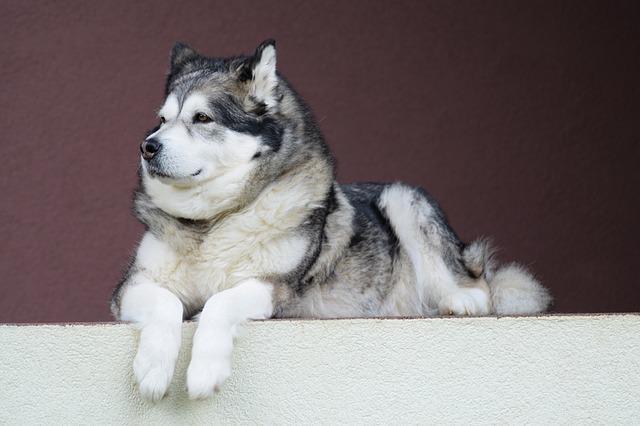
A close relative of the Siberian husky is the Alaskan malamute. The Alaskan malamute is a bigger dog than the Siberian husky at 23 to 25 inches long and 75 to 85 pounds. The American Kennel Club has recognized the Alaskan Malamute since 1935, and this dog breed ranks 58th in the AKC’s popularity poll.
You can easily identify a malamute with its face markings. It has a cap on the head with its face having only white fur, which can come with a bar or mask markings.
It has oblique almond-shaped eyes, which may be brown or blue. However, the AKC prefers dark brown eyes. The blue-eyed Alaskan Malamutes get an automatic disqualification to the club’s events. It also has triangular ears with tips that are a little rounded.
Unlike the Siberian husky, the Alaskan malamute is not built for racing. Instead, it is more suited for strength and endurance.
Samoyed
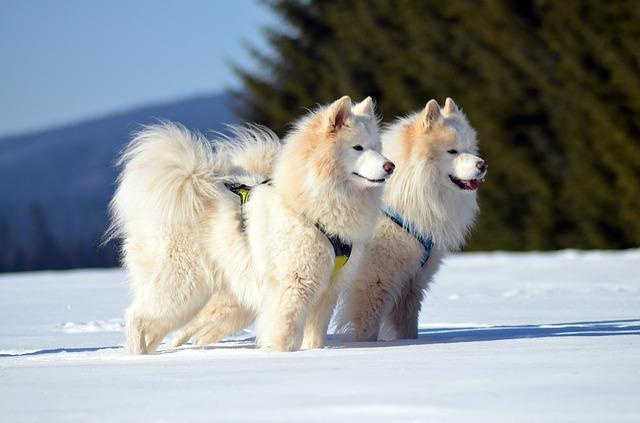
The Samoyed is another AKC-recognized sled dog breed that dates back to 1906. It earned 59th place in the AKC’s popularity ranking.
Their most distinguishing feature is their perpetual smile. Its mouth is always smiling, which is cute, but it also prevents their drool from becoming icicles when traveling in harsh weather. These cute smiling sled dogs use their white warm coats to protect themselves from the cold.
This dog is very social and friendly. Too friendly that if you leave it on its own, it may start misbehaving. As an active dog, it needs to exercise and play every day. If you take this dog out for a walk, make sure it’s on a leash because it tends to run away on its own. You can get a retractable dog leash or an adjustable dog leash with a vest to keep your Samoyed from escaping.
Chinook
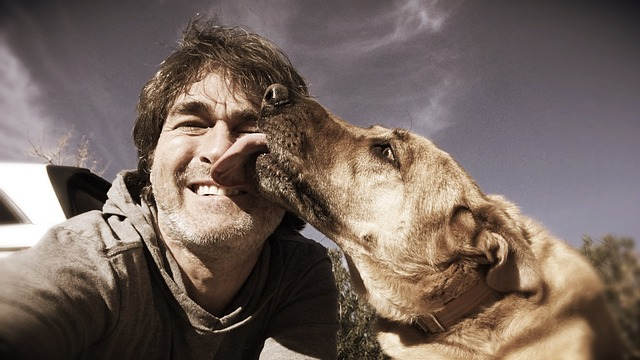
Another AKC-recognized breed is the Chinook. It is considered a rare breed, having been close to extinction at one point. These sled dogs are built with both speed and strength in mind. They are freight dogs capable of running in sled races as well.
The breed is known to mature quite slowly, wherein it may reach maturity only after 4 to 5 years. Chinooks are known for their tawny coat, which could be honey to dark reddish-gold.
They are known to be calm and easily get along with people, especially kids. Because of this, they’re not so much fit as watchdogs.
When these dogs are in the house, they may look behaved, but Chinooks show their full-on energy once they’re outside. You can bring this dog to your workouts if you’re physically active because they like moving, given their build as freight dogs and race dogs.
Canadian Eskimo Dog
The Canadian Eskimo dog is a working sled dog that originated in Canada’s Arctic regions. The Inuit people living in these arctic regions called the dog Qimmiq. These aboriginal sled dogs were bred for long adventure trips rather than races. They were also selectively bred as search and rescue dogs.
Other dogs classified as working dogs are:
- St. Bernard
- Great Dane
- Boxer
The Canadian Eskimo dog has a thick coat with stiff guard hairs. Their coats can be red, white, cinnamon, buff, grey, or sable with white streaks.
These hunting dogs were used in dog sledding, but this dog breed was slowly whittled down when the Siberian husky came to Canada. The breed further declined after the rise of snowmobiles in the 1960s. The Canadian Kennel Club and other dog associations intervened to protect the rare breed, now with only a few domesticated breeds.
The Canadian Eskimo dog is recognized by the United Kennel Club and the Canadian Kennel Club.
Sled Dogs Not Recognized by Any Kennel Club
There are also less well-known sled dog types and breeds. These sled dog types and breeds have no breed standards because no kennel club officially recognizes them.
Mackenzie River Husky
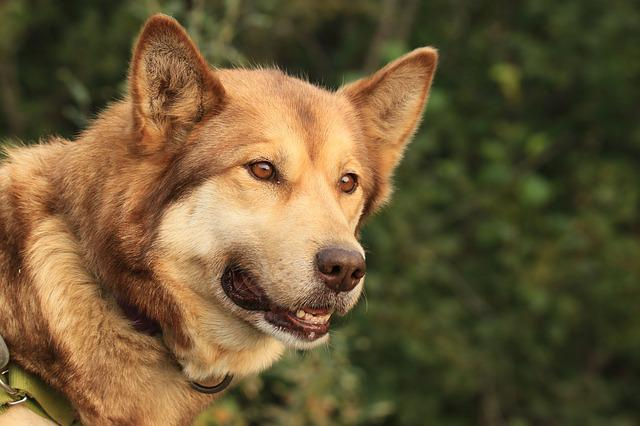
The Mackenzie river husky is a dog type, not a dog breed. The term is used loosely for sled dogs in the arctic regions. These dogs took on the name of the village from which they came. In the 1960s, the name Mackenzie river husky encompassed all these dogs.
They can grow up to 29 inches and weigh 63 to 104 pounds. They have thick wolf-like coats, which can be a variation of black, white, gray, sable, red, blond, or tan.
The dog neared extinction around the 1950s to 1960s when the Canadian government ordered hunting down these dogs. This dog classification is considered rare.
Alaskan Husky
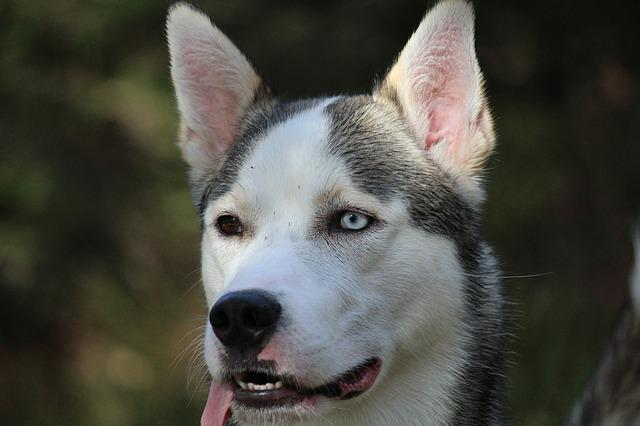
Like the Mackenzie river husky, the Alaskan husky is also a dog type instead of a dog breed. They were initially bred in Canada and the northern U.S.
Their arctic origins make you think they have a thick coat fit for the weather, but they have a light coat, which can clean itself through their skin’s natural oils. The dogs’ appearance and demeanor vary due to being bred without set breeding standards.
Scandinavian Hound

The Scandinavian hound, also known as the Eurohound, was created by breeding purebred and crossbred dogs to produce a dog capable of racing and hauling sleds. These sled dogs weigh 18 to 24 kilograms with a short, shiny coat found in many colors. The Scandinavian hound is favored as one of the most valuable and mighty sled dogs today in Scandinavia.
The dog was originally bred in Norway, combining the husky and the pointer. In 1980, the pointer dog was imported from North America, expecting them to beat the Alaskan mushers’ husky. The pointer and husky’s traits enabled these sprint dogs to be as intelligent and eager as a pointer with a husky’s sled dog capabilities.
Labrador Husky
Given its name, you might think that this dog was a Labrador retriever and Siberian husky crossbreed. However, this is not the case. The Labrador retriever is not classified as a sled dog but was used as one before.
The Labrador husky is a Spitz-type dog. You can see the influence of their wolf origins in their facial features, having closely-distanced oval eyes and small triangular ears set high on their heads. They also have the following features:
- A long and narrow muzzle
- Dense, warm coat
- Curled tail like Spitz dogs
- Broad chest, which enhances their lung capacity in hauling heavy loads
This dog doesn’t bark often, so they are not the best dog to guard your home. However, you can trust this eager, social dog to be left alone with children. If you have smaller pets in the house, let the Labrador husky get to know them early on. Unfortunately, if the dog is not familiar with them, they might chase these smaller animals.
Sakhalin Husky
Like other huskies, the Sakhalin husky has a dense, double coat to survive in the cold. Their fur comes in various colors but is observed to be generally darker compared to other huskies. Their eyes may be brown, pale blue, yellow, green, or particolored. Observe proper care for your dog’s double coat using a reliable silicone bathing brush, grooming comb, and stainless steel shears.
This breed is amiable and confident, enabling it to get along with children. As sled dogs, they need exercise and physical stimulation daily. Use chewable ropes, non-toxic squeaky toys, or interactive balls to make it more fun with your dog.
This breed is rare and, unfortunately, nearing extinction. The Sakhalin husky originated on the island of Sakhalin in northern Japan during the 1950s.
Final Thoughts
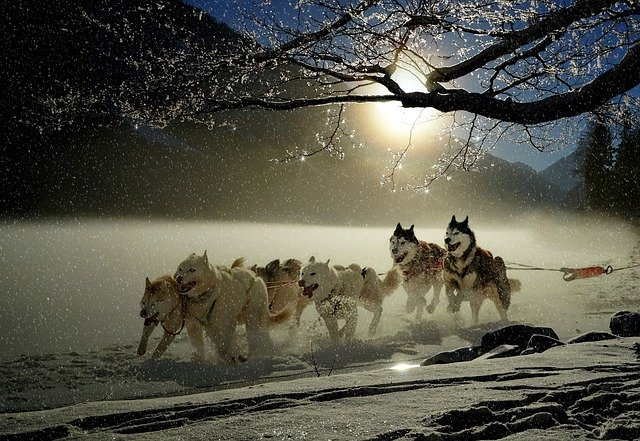
There are numerous sled dog breeds, ranging from well-known to rare dogs. These sled dog breeds are distinguished by their arctic origins, which resulted in their thick double coats.
To wrap up:
- If you want to have one of these dogs as a family companion, make sure it gets plenty of exercise.
- If you’re looking for a guard dog, keep in mind that some breeds are not the best dogs for the job.
- If you get this dog specifically for dog sledding, you must be a strict hands-on trainer to hone its strength and speed during races and competitions.
We hope you’ll meet your future furry companion!
FAQs
What breed of dog is used for sled dogs?
What is the most common type of sled dog?
What’s the best sled dog?
How do sled dogs stay warm?
Are sled dogs male or female?
Are sled dogs friendly?
How many dogs do you need to pull a sled?
What happens to old sled dogs?
How fast can a dog sled go?
How cold is too cold for sled dogs?

